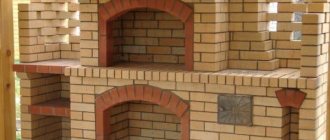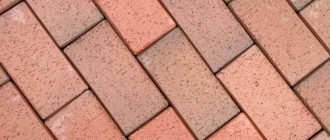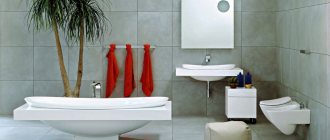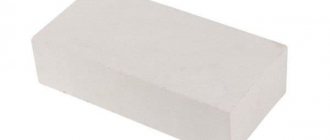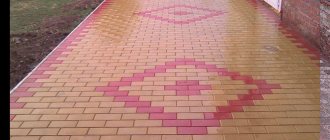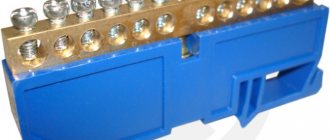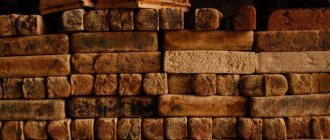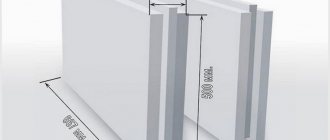Brick is an integral part of almost any construction. The most common and recognizable is the familiar red brick. However, there are several more types of bricks used in highly specialized work.
Fireclay brick is a special type of brick used for masonry exposed to high temperatures. This type is successfully used for laying furnace fireboxes, chimneys and other structures that have direct contact with fire. Due to its fire-resistant properties, such bricks can withstand temperatures up to 1800°C .
How fire bricks are made. Compound
Production involves firing a special mixture, on average 70% kaolin clay and 30% fireclay powder. Proportions may vary depending on the type of fireclay block being made. To give the product greater strength, coke or graphic impurities can be added to the mixture.
Firing is carried out under the strictest control of temperature and time parameters, which makes it possible to obtain a light yellow block with smooth surfaces (see photo).
To check the “authenticity” of the block, you can lightly hit it - if it is a real fireclay brick, when hit it will “respond” with a ringing, slightly metallic sound.
Deviations from the firing technology are unacceptable: if you “burn” the product, it will be covered with a transparent film that prevents adhesion to the laying mortar during laying.
Characteristics of refractory bricks
Considering the variety of types of fireclay bricks, this subtype is stronger. The dimensions of fireclay bricks depend on the markings and are also used when laying buildings.
In addition, this product stands out:
- insignificant weight;
- excellent thermal conductivity;
- reliability;
- decorativeness.
All sizes of bricks, even those made by different manufacturers, are made according to the standard.
Dimensions of refractory bricks: length, width and height, standardized according to GOST 8691-73. All presented types of material must have a uniform tone, sharp edges and the necessary saturation.
Including all the listed characteristics, building materials correspond to a product of only the highest quality.
Depending on the type of product inclusions, firing method and purpose, building materials are divided into the following types:
- quartz (composed of quartz sand, clay). Here is the formula for quartz sand;
Quartz
- fireclay (produced by firing fireclay powder and clay raw materials);
Chamotte
- The main one is red brick based on clay inclusions. Check out its dimensions here;
Red
- white silicate. Here is its texture;
White silicate
- carbon (pressed graphite).
Carbon
Basic and carbon types are used in industrial companies, withstanding significant temperatures. For home stoves, a fireclay product is used.
Home oven
The quartz product is excellent at maintaining tºC, but collapses under chemical conditions. Straight, angular, wedge-shaped brick formations are used in construction.
Different shape
By choosing a brick of excellent quality, you don’t have to worry about the durability of the building. Each type has its own markings and scales. It is impossible to combine types of refractory bricks together to fit a universal size.
At first, the bricks were not standard, and the volume was previously calculated in inches. Fixed indicators arose only in the 19th century. Before this period, any workshop produced bricks of its own volume.
The first standard arose in the Russian Federation in 1927. We focused on a German product with a scale of 250x120x65, which remains to this day and is fixed as standard sizes.
This size is usually considered as NF - normal format. is used to build the base of the walls, with their further processing.
Walling
There are several types of building materials:
- single is referred to as the common choice in construction. The dimensions of a single red brick are 25x12x6.5 cm;
- one and a half arose in the era of industrialization already on an increased scale. The size of the one-and-a-half facing, as well as the building one, is 25x120x8.8 cm ;
- the double size of refractory bricks, the GOST standard, arose later, 25x12x13.8 cm .
Dimensions
The size of fireclay bricks and other indicators are described in the article.
The standard indicators also include other not very popular product scales. These include the euro type - 250x85x65 mm and modular 288x138x65 mm.
Euro euro
According to the standard, the edges are called poke, spoon, bed. The wide side is the “bed” . The short edges are called “poke”, and the height is determined by them. The long, narrow edge is a spoon.
Names of parties
Brick panels look great as an exterior treatment. Properly selected size facilitates construction work.
Marking and symbols according to GOST
The characteristics of fireclay products are clearly regulated by the relevant technical documentation - GOST 8691-73 and GOST 390–96 . GOSTs specify all the technical characteristics and indicators that fireclay blocks must comply with.
For a clear classification of fireclay bricks, there is a certain marking that reflects the main characteristics of the product.
The marking consists of 2 or 3 letters and numbers:
- The first letter is “Ш” , indicating that the brick belongs to fireclay products.
- The second letter symbolizes the fire resistance class of the block. According to GOST, there are only three of them, each with a certain temperature maximum (see table below). If the second letter in the marking is missing, this indicates that the brick was manufactured not according to GOST , but according to TU - the standards of the manufacturer.
- The number following the letter designation is the geometric dimensions of the block. They are fixed and determined by GOST 8691-73 .
- The last letters in the marking indicate the manufacturer's abbreviation.
| Brand of refractory product | Maximum application temperature (degrees C) |
| SHAK, SHA | 1400 |
| ShB | 1350 |
| SHV, SHUS | 1250 |
| PB | 1350 |
| PV | 1250 |
How to choose a brand of brick
In the construction of home stoves and fireplaces, quartz and fireclay red bricks are used. The last option is the most popular, since quartz at high temperatures changes its structure, thermal conductivity and volume - and this leads to destruction of the walls.
- Refractory red brick is designed for temperatures of about 1000 ° C. Frost resistance is important for this material - especially for laying country stoves that are heated irregularly. The labeling must include the designation F35 (at least 35 freezing and thawing cycles). The size of the red stove brick is 250 x 120 x 65 mm.
- Fireclay brick. In addition to strength, this material is characterized by rapid heating and long-term heat retention. The most popular brands are SHA-5 and SHA-8. The letter A indicates the maximum permissible temperature (1400 o C). ShB-5, ShB-8 can withstand 1350 o C and are noticeably cheaper.
Kiln brick size, standard and its requirements
A separate document has not been developed for bricks for stoves; there is only GOST 8426-75, which stipulates the dimensions and shape of clay bricks for chimneys. According to this standard, two standard sizes of straight brick are installed:
- single – 250 x 120 x 65 mm;
- thickened – 250 x 120 x 88.
Dimensions and specifications
| Index | Meaning |
| Fire resistance, °C | 1100-1800 |
| Density, kg/m³ | 1700–1900 |
| Thermal conductivity coefficient, W/m °C | 0,6 |
| Strength grade | 75–250 |
| Frost resistance grade | 15–50 |
| Porosity, % | 3-85 |
The specific heat capacity of fireclay brick is 833 J/(kg deg) at 100°C and 1251 J/(kg deg) at 1500°C .
Modern manufacturers offer a lot of varieties of fireclay blocks, differing not only in type, size or weight, but also in fire resistance class. To make your choice easier, it is enough to know the main characteristics of the products:
- Dimensions. Today, manufacturers offer a wide “size range” of fireclay blocks. The most popular brick sizes are 230*114*65 mm and 250*124*65 mm.
- Form. There are several types of fireclay block shapes: standard rectangular, trapezoidal, arched or wedge-shaped.
- Porosity. This indicator affects the heating time of the brick and its heat transfer. More porous products heat up faster and release heat more slowly, but have less strength. 1700–1900 is considered optimal .
| Designation, brand | Dimensions, mm | Form |
| ShB-5 | 230 x 114 x 65 | straight |
| ShB-6 | 230 x 114 x 40 | straight (fly) |
| ШБ-8 | 250 x 124 x 65 | straight |
| ShB-9 | 300 x 150 x 65 | straight |
| ShB-22 | 230 x 114 x 65/55 | end wedge |
| ShB-23 | 230 x 114 x 65/45 | end wedge |
| ShB-25 | 250 x 114 x 65/55 | end wedge |
| ShB-44 | 230 x 114 x 65/55 | rib wedge |
| ShB-45 | 230 x 114 x 65/45 | rib wedge |
| ShB-29, 30 | 300 x 150 x 65/55 (65/45) | end wedge |
| ShB-47 | 250 x 114 x 65/55 | rib wedge |
| SHA-5 | 230 x 114 x 65 | straight |
| SHA-6, SHA-14 | 230 x 114 x 40 | straight |
| SHA-8 | 250 x 124 x 65 | straight |
| SHA-9 | 300 x 150 x 65 | straight |
| SHA-22 | 230 x 114 x 65/55 | end wedge |
| SHA-23 | 230 x 114 x 65/45 | end wedge |
| SHA-25 | 230 x 114 x 65/45 | end wedge |
| SHA-29, SHA-30 | 300x150x65/55 | end wedge |
| SHA-44, SHA-45, SHA-49 | 230 x 114 x 65/55 (65/45) | rib wedge |
Fireclay brick: dimensions, characteristics
Brick is a building material of the correct configuration, which is used in the construction of buildings. The material is produced from minerals that have stone in them, have the properties of strength, water resistance and can withstand temperature changes.
Fireclay brick is a precisely shaped material and also has a yellowish tone. The sizes of refractory bricks vary and depend on many characteristics of the material, including the object of application.
When tapped, a loud, steely sound is produced, and when a powerful blow is applied, the material will break into large pieces. When constructing masonry installations, under the influence of high temperatures, fire-resistant material is used. The materials include special additions to prevent cracking due to heat.
When constructing industrial structures used for furnaces, it is necessary to use refractory products of various groups and volumes.
Characteristics of refractory bricks
Considering the variety of types of fireclay bricks, this subtype is stronger. The dimensions of fireclay bricks depend on the markings and are also used when laying buildings.
In addition, this product stands out:
- insignificant weight;
- excellent thermal conductivity;
- reliability;
- decorativeness.
All sizes of bricks, even those made by different manufacturers, are made according to the standard.
Dimensions of refractory bricks: length, width and height, standardized according to GOST 8691-73. All presented types of material must have a uniform tone, sharp edges and the necessary saturation.
Including all the listed characteristics, building materials correspond to a product of only the highest quality.
Depending on the type of product inclusions, firing method and purpose, building materials are divided into the following types:
- quartz (composed of quartz sand, clay). Here is the formula for quartz sand;
Quartz
- fireclay (produced by firing fireclay powder and clay raw materials);
Chamotte
- The main one is red brick based on clay inclusions. Check out its dimensions here;
Red
- white silicate. Here is its texture;
White silicate
- carbon (pressed graphite).
Carbon
Basic and carbon types are used in industrial companies, withstanding significant temperatures. For home stoves, a fireclay product is used.
Home oven
The quartz product is excellent at maintaining tºC, but collapses under chemical conditions. Straight, angular, wedge-shaped brick formations are used in construction.
Different shape
By choosing a brick of excellent quality, you don’t have to worry about the durability of the building. Each type has its own markings and scales. It is impossible to combine types of refractory bricks together to fit a universal size.
At first, the bricks were not standard, and the volume was previously calculated in inches. Fixed indicators arose only in the 19th century. Before this period, any workshop produced bricks of its own volume.
The first standard arose in the Russian Federation in 1927. We focused on a German product with a scale of 250x120x65, which remains to this day and is fixed as standard sizes.
This size is usually considered as NF - normal format. is used to build the base of the walls, with their further processing.
Walling
There are several types of building materials:
- single is referred to as the common choice in construction. The dimensions of a single red brick are 25x12x6.5 cm;
- one and a half arose in the era of industrialization already on an increased scale. The size of the one-and-a-half facing, as well as the building one, is 25x120x8.8 cm ;
- the double size of refractory bricks, the GOST standard, arose later, 25x12x13.8 cm .
Dimensions
The size of fireclay bricks and other indicators are described in the article.
The standard indicators also include other not very popular product scales. These include the euro type - 250x85x65 mm and modular 288x138x65 mm.
Euro euro
According to the standard, the edges are called poke, spoon, bed. The wide side is the “bed” . The short edges are called “poke”, and the height is determined by them. The long, narrow edge is a spoon.
Names of parties
Brick panels look great as an exterior treatment. Properly selected size facilitates construction work.
Standard sizes according to GOST, cost and weight
For the laying of stoves, materials are used that can withstand 1,300 tºC, including those that are not subject to rust.
The GOST established the dimensions of red brick for a fireplace and stove:
- refractory brick should be 250x123x65 mm in size;
- the size of the red refractory brick must correspond to 250x120x65 mm.
Please note that the bricks differ only in width, height and the length is completely identical. How much a red stove brick weighs depends on the size and density of the stone. Here is its size.
Weight
In order to make your choice, you must take into account that suppliers determine the cost of the product themselves. For this reason, the best solution would be to purchase the material directly from the manufacturer.
Features of excellent quality brick:
- produced using a technology in which the product produces a metallic ringing sound;
- the refractory material does not crumble into small particles, but is crushed into large ones;
- the product contains sandy color, grainy;
- moisture resistance.
They prefer materials with high strength (M200). The numbers indicate the load factor. Thus, this label indicates that the product can withstand a weight of 200 kg.
M200
The mass of a typical product is 3.8 kg. Fire-resistant material of other sizes weighs from 2.5 – 6 kg. Areas with high fireplace temperatures are designed from red clay refractory bricks. Straight bricks with a scale of 250x123x65 mm are used. It practically corresponds to the standard indicator.
The price of a refractory brick is many times more expensive than an ordinary product, and the size and grade are expressed in alphanumeric variations.
One fireclay brick is valued at 55 rubles. Fireclay brick is considered one of the most necessary building materials, as well as for heating buildings for home use. The size of the refractory brick is standard according to GOST 8691-73. When choosing a construction product, you need to understand the solution.
For more information about the dimensions of refractory bricks, watch the video:
Classification Features
Designation and marking ШБ-5, ШБ-6, ШБ-8, ШБ-9; SHA-5, SHA-6, SHA-8, SHA-9
Dimensions, mm 230x114x65, 230x114x40, 250x124x65, 300x150x65; 230x114x65, 230x114x40, 250x124x65, 300x150x65
Shape: straight
All materials made from refractory clay are marked with letters and numbers. The first letter should be “Ш” - it indicates that the brick is made from aluminosilicate clay. The second letter exists in two variations “A”/”B”. The letters indicate that the product is suitable for all types of masonry.
Marking
The presence of only one of these letters informs the buyer that the manufacturer is guided exclusively by GOST standards. The designation “SHA” means that the product contains a huge percentage of aluminum oxide.
Brick is the most common building material, because no construction site can do without it. Here are the dimensions of a solid brick.
In order to make the floor high-quality and strong, it must first be puttied. Here's everything about floor putty.
Without the use of cement mortar, it is impossible to plaster walls, pour foundations, or lay bricks. By clicking on the link, you will become familiar with the proportions of this solution.
That is, approximately 30%, which increases fire resistance to +1690C. “ShB” has approximately 28% aluminum oxide, which makes it possible to withstand up to +1650C. If after the letter “Ш” there is a number, for example “Ш5”, this means that the manufacturer did not use GOST indicators, but applied its own manufacturing technology.
A product with the “5” brand meets the dimensions 230x114x65 mm. The last two indicators indicate the manufacturer.
The manufacturer can offer fire-resistant “Ш6” with dimensions 230x115x40 mm. The generally accepted one is “W8” with characteristics of 250x125x65 mm.
According to the standard, similar abbreviations of a refractory product are shown:
- ША, ШБ – general purpose;
- ShKU – bucket;
- SHAV – cupola;
- Broadband – domain;
- ШЦУ – double-sided for lining.
Heating devices are equipped using a general purpose product. We will analyze the standard sizes of refractory bricks in detail. The alumina type is considered more in demand, including refractory clay and fireclay product.
For this type it is necessary to adhere to precise firing. For furnaces, only products of the first type are used, which crack when heated. Fireproof brick size “ШБ5” looks like a yellowish rectangle. Scale 230x114x65 mm.
Dimensions ШБ5
According to the standard, the material must meet the following characteristics:
- part of the binary compound of aluminum and oxygen – 28%;
- fire resistance – not less than 1,650oC;
- There is no tºC during softening.
The weight of ШБ5 is 3.5 kg/piece. Cost 35 rubles. Refractory brick “ШБ8” measures 250x124x65 mm. With the help of such scales it is not difficult to calculate the required number for masonry.
“ША8” product is used in industrial and private buildings. Has a high level of aluminum oxide. Used for internal laying of chimneys.
Product Rating:
- percentage of aluminum oxide – 30%;
- fire resistance – 1 690oC;
- softening tºC not less than 1,300oC.
ША-6 is used in the construction of thermal units at t 1,690ºC. The main properties of the product do not differ from the “ША8” marking. The only difference is in size. Product weight per piece – 3.4 kg. Scale – 230x114x40 mm. Cost from 30 rub./piece.
Types of Sha
Fireproof brick “ША5” measures 230x114x65 mm. The weight is the same as that of “ША8”. The price of a fire-resistant grade is 30 rubles/piece. Dimensions are the main criterion in the selection of refractory bricks.
The quality, reliability and safety of the structure depend on the correct fit. It is impossible to allow a loose fit of the material.
It is necessary to avoid the occurrence of areas with a very thin ball of mixture. The cost of refractory bricks is calculated using the construction diagram.
Marking ША5, ША6, ША8, ШБ5, ШБ8.
Size, mm 230x114x652, 30x114x602, 50x124x652, 30x114x652, 50x124x652, 30x114x652, 50x124x65, 230x114x652, 30x114x65.
Fire resistance, C 1 690, 1 690, 1 690, 1 690, 1 690, 1 300, 1 300, 1 150, 1 465.
Marking
When choosing a material for masonry, you should understand how much red stove brick is needed for a certain area and a number of key properties that are responsible for the quality of the product. Only by using a high-quality product can a smooth and reliable stove be created.
When selecting products, special attention should be focused on the following properties:
- the uniformity and uniformity of the plane must be almost perfect. There is no need to purchase a brick, in the plane of which remains of inclusions, stones, inclusions, and cracks can be identified;
- the material must have a uniform, identical tone;
- the correct formation of the stone indicates quality. It is necessary that all edges be the same length, without flaws. The presence of protrusions will cause damage during installation;
- different masses of bricks with the same dimensions indicate density. The greater the mass, the denser the product, and the longer it accumulates heat. To build the foundation of a building, you should know information about the weight of the brick.
conclusions
Before you buy a refractory material, familiarize yourself with its main characteristics and dimensions, which differ from the parameters of ceramic, silicate and simple types.
Experienced builders use fireclay for laying thermal structures, which consists of a special type of clay raw material, fired until it completely loses its plasticity. The material protects and transfers heat well, withstanding unstable temperature fluctuations without losing the initial characteristics of the material.
Despite the fact that the fire-resistant chamotte product is more expensive than existing analogues, the material has only positive features. To make an excellent choice of bricks, it is recommended to consult with a master who will calculate the amount of material needed.
«;
Weight
Permissible weight according to standards is 3.7 kg. Depending on the porosity and density, products made according to GOST can weigh from 2.8 to 3.7 kg, and bricks made according to specifications can weigh up to 4.5 kg.
| Size | Weight of one brick (kg) | Weight of bricks on a pallet, (kg)/ (Number of pieces) | Weight m3 of brick, (kg)/ (Number of pieces) |
| Single | 3,5 — 4 | 1350-1600 (385-400) | 1745-2050 (513) |
How much does fireclay brick weigh?
Refractory fireclay brick differs from other materials in its increased resistance to heat and temperature changes. Also, one of its main advantages is the ability to store heat for a long time. Due to its characteristics, it is used for the construction of both conventional fireboxes and stoves in private buildings, as well as industrial facilities.
The limited range of use is due to a number of features of this refractory brick:
- quite high cost;
- the need to use a special high-quality mortar when laying;
- due to its high density, the material is difficult to cut;
- hygroscopicity - absorbs moisture well, which leads to an increase in weight and a decrease in strength characteristics.
Fireclay bricks are made by firing a homogeneous mixture consisting of fireclay (fireclay) and coke or graphite powder until elasticity is completely lost. It varies in shape, size, weight, as well as density and porosity. It can be rectangular and shaped (wedge- and trapezoidal, complex configurations), large and small dimensions. Piece fireclay products are marked depending on the fire resistance class and maximum thermal load. The number indicates the aspect ratio. The most commonly used brands are ША and ШБ.
According to GOST 390-96, the weight of one brick of standard sizes varies from 3.4 (for 230x114x63 mm) to 4 kg (250x124x65). It is directly affected by porosity. Examples of the dependence of weight on dimensions and shape for fireclay products of the ShA and ShB brands are given in the table:
| Product number | View | Size, mm | Weight, kg |
| 1–10 | straight | 230x65x65 | 1,9 |
| 250x124x75 | 4,7 | ||
| 345x150x75 | 7,8 | ||
| 11–15 | one and a half | 230x172x75 | 5,9 |
| 250x187x75 | 7,0 | ||
| 300x225x65 | 8,8 | ||
| 16–19 | three-quarter | 172x114x65 | 2,6 |
| 187x124x75 | 3,3 | ||
| 20–32 | end wedge | 172x114x65x45 | 2,2 |
| 250x124x75x65 | 4,3 | ||
| 345x150x75x65 | 7,3 | ||
| 49–54 | trapezoidal | 230x114x96x65 | 3,1 |
| 345x150x80x75 | 6,0 | ||
| 345x150x125x75 | 7,1 | ||
| 60–73 | heel | 114x114x144x133x34x57 | 2,8 |
| 172x230x144x201x52x144 | 9,1 | ||
| 250x230124x269x53x105 | 12,0 |
The relatively small mass of fireclay refractory bricks can significantly reduce the load on the foundation and does not affect the operational properties. Weight also affects thermal properties: the lower it is, the higher the thermal conductivity, therefore, better moisture absorption and stronger adhesion to the solution.
When purchasing fireclay bricks, special attention is paid to strength and compliance with firing technology. If you gently hit with an iron object, a ringing sound should be heard. After a strong impact, a high-quality product will fall apart into several large pieces rather than crumble. It is important that the middle of the brick is not too dark - this is a sign of non-compliance with the firing technology.
You should choose a product without chips and cracks, with a uniform shade over the entire surface, of the correct geometric shape (permissible distortion is no more than 2 mm). Of the several options, it is better to choose the heavier one - it is denser and, accordingly, stronger. You also need to make sure that the bricks are stored in the correct conditions. It should be stored in a dry, ventilated area on wooden pallets.
What mortar should I use for laying?
The technology for working with fireclay bricks is slightly different from the technology for conventional masonry. The main difference lies in the mortar used to hold the blocks together - fireclay masonry will require a special fireproof mixture that is resistant to high temperatures.
The basis of such a solution will be fireclay mortar - a mixture consisting of fireclay sand, cement and ground refractory clay. When using a ready-made dry mixture, you will need clean water with a minimum amount of salts.
Water is added to the dry mixture at the rate of 40 kg of fireclay mortar per 100 blocks. The solution is stirred until thickened; the finished mixture should resemble thick sour cream in consistency. It is best to mix with an electric drill or a special mixer - this will significantly save time and effort.
After mixing, the solution must be left for an hour, then mixed thoroughly again. After this you can start working.
Weight of fireclay bricks
Externally, fire-resistant bricks of the Enlightenment era did not differ from those that were used everywhere, but, unlike them, they could withstand temperatures of 1200 ° C and higher without damage.
We found such a solution experimentally, but since those distant times nothing fundamentally has changed in the production technology of this building material. It just contained clay that had gone through a firing procedure. She was the basis of the composition. Its content in the product could be 70% or even more.
Graphite was most often used as a binding material (it could be replaced by coke powder). But the general standard was adopted only in the 20th century, or more precisely, in 1927. A German-made brick with dimensions 250 × 120 × 65 was used as a sample.
Fireclay, a material used in the production of refractory bricks, is formed by firing clay at high temperatures - 1300–1500°C. This procedure usually takes place in shaft or rotary production kilns. In a word, the task of firing is to rid the material of plasticity and give it subsequent fire resistance.
Fireclay can be divided into two types: “high-annealed” and “low-annealed.” Their differences lie in the fact that the first type has a degree of water absorption of up to 10%, and the second - up to 25%.
Fireclay products are used for interior lining of fireplaces, chimneys, and stoves. The material also became quite widespread in architecture and even sculpture (second half of the 20th century).
It is quite easy to recognize a fireclay product by its appearance. It has a sandy yellow color and a slightly granular structure. Such material can be used not only from the point of view of functionalism, but also aesthetics. Let's just say that in appearance, brickwork made from refractory elements looks quite presentable. These bricks not only fulfill their direct function - accumulation, preservation and release of heat without damage or deformation, but also give the fireplace an attractive, authentic look. In general, to put it simply, it is not only functional, but also quite beautiful. Let's just say that the masonry will fit perfectly into the design of a cozy interior.
What properties should a refractory brick have? First of all, this is resistance to high temperatures, which is quite logical. The material must be able to withstand a lot of heating and cooling without damage. It must also have low thermal conductivity to retain heat inside the stove and/or fireplace. In addition, the material must have high thermal inertia so that it can slowly release heat to the environment, as well as high heat capacity so that it can accumulate large amounts of heat.
We recommend reading:
How to cut a fireclay block?
To produce fireclay blocks of non-standard sizes, production uses stone-cutting machines that provide high-quality cutting in large volumes and are equipped with a water supply system to cool the disk and prevent the appearance of fireclay dust.
At home, a stone cutting machine is a luxury. Therefore, to cut fireclay bricks, you will need to immerse the block in cold water for 20 minutes , and then cut with a regular grinder, using a diamond, cutting or abrasive disc. Moisture absorbed into the brick will ensure easy cutting and no dust. Before picking up an angle grinder, I strongly recommend that you read this article >>>
Manufacturers of fireclay bricks
Very often, brick manufacturers, instead of GOST , use their own specifications (production conditions developed by the manufacturer), which raises a lot of questions among buyers. Therefore, when choosing a brick for refractory masonry, it is better to focus on blocks made in accordance with GOST - this way you are guaranteed to receive high-quality materials made in compliance with all standards and technologies.
The most famous manufacturers of fireclay bricks and refractories are:
- Sukholozhsky refractory plant.
- JSC "Novomoskovskogneupor"
- Borovichi refractory plant.
- JSC "Snegirevskie Refractories"
- OJSC Semiluksky Refractory Plant.
Fireclay brick: types, sizes and weight
If you are planning to lay out a barbecue, barbecue, oven or fireplace, then only refractory brick can be the material.
There are several varieties of it, including diatomite, magnesite, carbon and quartz. However, fireclay brick stands out in its properties, used in places with temperatures of about 1300 C. This material has universal characteristics. It tolerates sudden temperature changes when heated, demonstrates excellent thermal conductivity, and does not react to alkalis and a number of other aggressive chemical compounds. Fireclay brick also has an aesthetic function - products made from such material always attract the eye due to its variety of shapes (rectangular, arched, wedge-shaped and trapezoidal) and shades (from almost white to light brown).
Note: The darker the color of the fireclay brick, the better suited it is for constructing the firebox of a furnace.
The disadvantages of fireclay bricks include the following:
- its porous material quickly absorbs moisture, which leads to an increase in weight, as well as a decrease in strength during the heating period;
- does not tolerate freezing well, so if the oven is not used regularly, it may begin to crumble;
- difficult to process, in particular, it is difficult to cut due to its high density and requires the use of a special solution during laying.
Another serious disadvantage from the consumer's point of view is the high price of fireclay bricks.
Deciphering the markings
Fireclay bricks are produced in accordance with GOST with dimensions of 230x113x65 mm, as well as in accordance with specifications, where, in accordance with modern standards, geometric parameters can change in any direction.
Fireclay bricks come in different brands. So ladle, blast furnace, double-sided end and cupola are used in production, but in private construction, bricks marked ShA and ShB are used. Here the letter “Ш” means fireclay, and the letter “B” indicates the fire resistance class and indicates that the brick can be used at temperatures up to 1350 C.
Brick marked ShB Brick marked ShA-5
Brick marked ShB is the undisputed leader in the construction of stoves, fireplaces and barbecues for individual use. The standard sizes of such bricks are ShB-5 and ShB-8. The numbers help you navigate the sizes. So the ShB-5 length is 230 mm, width 114 mm, height 65 mm. ShB-8 is larger: with a similar height of 65 mm, its length reaches 250 mm and width – 124 mm.
In addition to the above, you can also find fireclay bricks marked ShB-45, ShB-6, ShB-94 on sale. Each of these types has differences in size. For example, ShB-6, with a length of 230 mm and a width of 114 mm, has a height of only 40 mm.
To properly distribute the load on the foundation, before starting masonry, you should take into account the weight of the refractory brick. This indicator is different for each marking. If we talk about the weight of fireclay bricks, then one of the lightest is ShB-6, which “pulls” only 2700 grams. The ShB-5 with its 3400 grams will be heavier, and the weight of the ShB-8 even reaches a full 4000 grams.
Standard sizes become one of the criteria for choosing refractory bricks.
Note: When purchasing this building material, you should pay attention to the fact that the bricks are free of chips, cracks and dents, and have a uniform color.
In addition, when tapped with an iron object, a high-quality brick sounds loudly (a dull sound indicates that the brick is burned out), and when hit with a hammer, it does not crumble, falling apart into large pieces.
When purchasing building materials on your own, make sure that they are stored properly - fireclay bricks should be placed on wooden pallets in a dry room with good ventilation. Proper transportation of refractory bricks is carried out in plastic packaging.
Special solution
Laying refractory bricks requires a special mortar. You can buy it or make it yourself. If you prefer a ready-made dry mixture, then go to a hardware store and buy fireclay mortar. Just add clean water to it and mix with a mixer or concrete mixer until it reaches a creamy consistency. Next, the mortar is allowed to brew for about an hour, and then it is stirred again and only after that they begin to work.
Experienced masons recommend adding about 15% Portland cement to this mixture for strength. It’s even better to make the solution yourself, since fireclay mortar causes complaints about the shrinkage of the masonry.
A self-prepared solution from refractory clay and fireclay sand allows you to achieve high strength of the brick connection. However, such a mixture requires a lot of time due to the need for prolonged soaking of the clay.
Ground white kaolin or blue Cambrian clay is suitable for refractory mortar. Before mixing the solution, the clay is soaked, completely covered with water, and left in this state for at least 12 hours (or up to three days) with regular stirring. The soaked clay is rubbed through a sieve with a mesh size of no more than 3 mm. Sand (fireclay or rock) is sifted separately. After this, the ingredients are mixed in a ratio of one part clay to two parts sand.
Note: For one hundred bricks you need 40 g. dry fireclay mortar, or three buckets of homemade mortar.
Secrets of the craft: to increase the strength of the homemade mortar, you can add about 150 grams per bucket. table salt, and for plasticity - about 200 g. liquid glass. However, we must remember that the same salt may later “come out” on the masonry as whitish stains. In general, a high-quality clay-sand mortar will firmly hold fireclay bricks without any additives.
